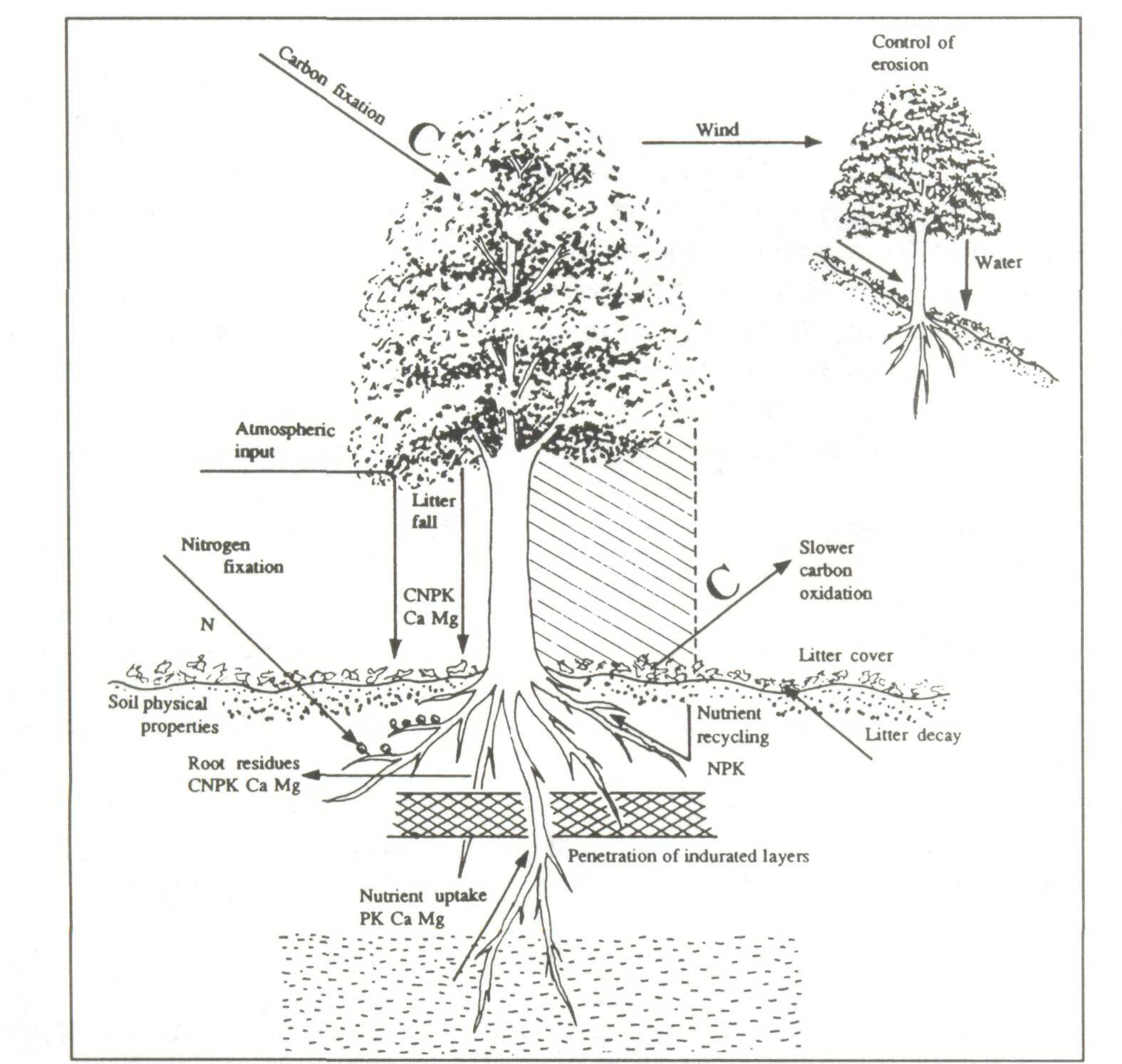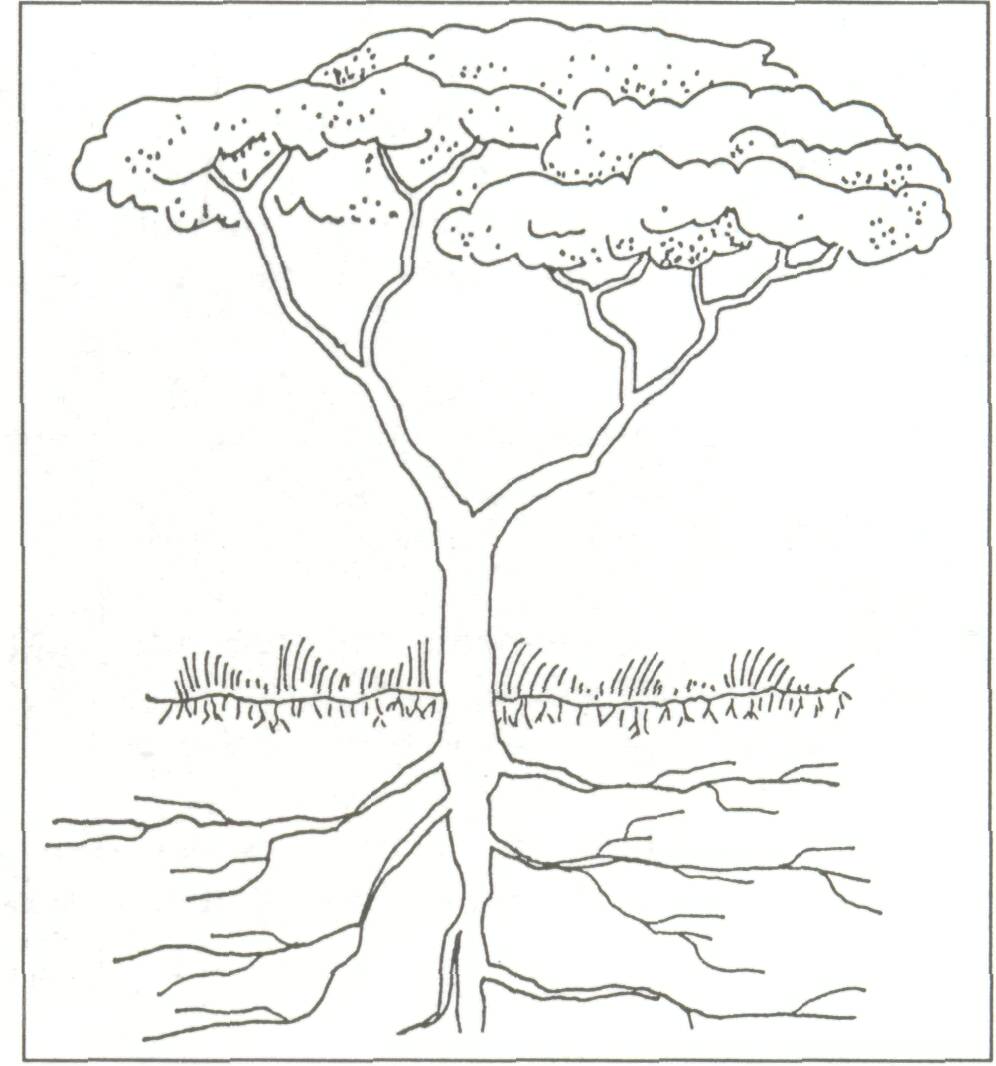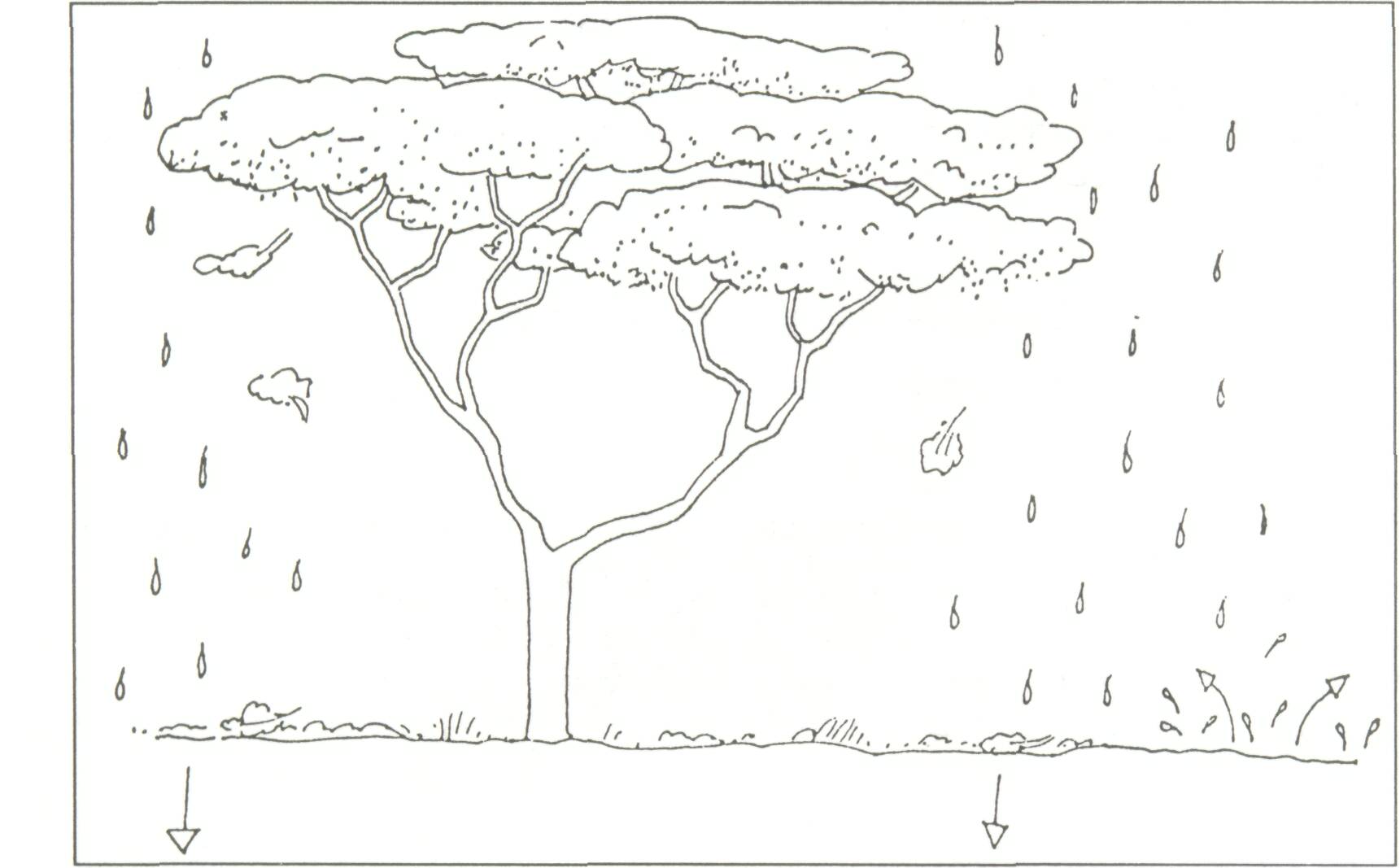|
The processes through which trees improve soils can be grouped into
four different categories:
-
Increasing inputs (organic matter, nitrogen fixation, nutrient
uptake)
-
Reducing losses (organic matter, nutrients) by promoting recycling
and checking erosion
-
Improving soil physical properties, including water-holding
capacity
-
Beneficial effects on soil biological processes.
The processes by which trees maintain or improve soils are listed in
Table 5.1 and illustrated in Figure 5.1. Some of these processes will be
discussed in more detail.
Table 5.1 Processes by which trees maintain or improve soils (not all
of the listed effects are proven — see text)


Litter and mulch
During the lifetime of a tree, leaves, twigs and branches die and
fall to the ground as litter. In agroforestry, trees are often managed
and the biomass from the tree may be cut and used as mulch. The roles
played by mulch and litter are similar.
In general, tree canopies only reduce the erosive effect of rainfall
by about 10%, and in certain situations the canopy may make the rainfall
even more erosive than if there were no tree. If the soil is covered
with litter or mulch, on the other hand, erosion will often be reduced
to low levels. Another characteristic of litter is its contribution to
the organic-matter content of the soil after it decomposes. A soil that
is rich in organic matter has a better capacity to absorb and retain
water, and thus is also more resistant to erosion. A good cover of
litter or mulch can also be very effective in suppressing weeds.
In general, trees do not necessarily lead to control of erosion. What
matters is their spatial arrangement and the way they are managed.
Nitrogen fixation
Many leguminous trees and a few non-leguminous ones have the ability
to fix atmospheric nitrogen through symbiosis with bacteria or fungi in
root nodules. The fixation of nitrogen has been proven and found to be a
significant factor in soil fertility. Tree species that have the ability
to fix nitrogen may not always be efficient in doing so, however. One of
the pre-conditions for efficient fixation of nitrogen is a minimum level
of phosphorus in the soil. In exhausted soils which are low in
phosphorus, therefore, nitrogen fixation may be insignificant even if
nitrogen-fixing species are planted.
The roots of a plant constitute 20-30 % of its biomass. But the roots
often contribute more to net primary production than the above-ground
biomass. This is because the fine roots only have a short lifespan and
therefore there is a rapid turnover of them. Hence, root decay is a
significant process, and it is probable that cutting back the biomass
above ground (coppicing, pollarding, etc.) results in a temporary
increase in root die back. When the roots die, nitrogen is released and
can be used by other plants, e.g. crops. So far, these processes of
release of nitrogen from roots are not very well understood but they are
being studied. Besides release of nitrogen, the death of the fine roots
also contributes to organic-matter build-up.
A major part of the nitrogen which is fixed by the roots is used by
the nitrogen-fixing plant for its own growth. The litter from
nitrogen-fixing plants is often rich in nitrogen which is added to the
soil when the litter or mulch decomposes.

Nutrient uptake
Tree roots normally penetrate deeper into the soil than the roots of
crops. It has, therefore, been assumed that trees are more efficient
than crops in taking up nutrients released by weathering deep in the
soil. Potassium, phosphorus and micronutrients are essential for plant
growth and these elements are often released through such weathering.
The nutrient uptake from deep layers of the soil, sometimes called
nutrient pumping, has still not been experimentally verified.

Nutrients from the atmosphere
The presence of a tree reduces wind speed and creates good conditions
for the deposition of dust. Nutrients in the atmosphere are conveyed to
the soil when they are dissolved in rain or settle with dust. Rain water
dripping from leaves and flowing along the branches carries the
nutrients to the ground, together with those released from the tree
itself and associated plants growing on it. It is known that the amounts
of nutrients reaching the ground in this way are substantial.
Protection from erosion
Soil erosion can be controlled by checking the flow of water down a
slope by establishing runoff barriers—the barrier approach—or through
maintaining a cover of living plants and litter on the ground—the cover
approach. A cover of mulch or litter on the soil reduces the impact of
rain drops and provides dispersed micro-barriers to runoff (Young,
1989). Soil erosion involves loss of topsoil, including loss of both
organic matter and nutrients. Trees play an important role in erosion
control both through the barrier and cover effects. Formerly the barrier
approach was thought to be the most important, but in recent years the
cover approach has received increasing attention.
In the barrier approach, trees and shrubs play a direct role in
reducing erosion if they are grown in hedgerows on contours. Another
effective control method is to combine trees and grass in strips along
contours. Combining trees and grass is a means of making optimal use of
the strips of land which are taken out of direct crop production. If
productive use is made of the strips, the soil-conservation measures are
more likely to be regarded as beneficial by the farmer and therefore to
be adopted on a permanent basis.

-
Barrier hedges of double rows of Leucaena with maize developing
naturally into terraces, Philippines
-
Leucaena barrier hedges planted at 90-cm spacing in furrows
between rows of maize developing into terracettes, Malawi
-
Trees on conservation works, Malawi: fruit trees on grass strips
and Leucaena on marker ridges (ridges laid out along contours to guide
cultivation ridges below)
-
Alternative arrangements for trees on conservation structures,
Cameroon.
-
Alternative positions for trees on fanya juu structures, Kenya,
Fanya juu structures are bunds in which the bank is above the ditch,
promoting natural terrace formation.
If physical soil-conservation structures are constructed, trees or
shrubs that are planted on or near them can help to strengthen and
stabilize the structures. Another example of the use of trees in the
barrier approach is the growing of trees as a windbreak.
The benefits of trees in the cover approach have been discussed
earlier in connection with litter and organic-matter maintenance.
Reduction of the rate of organic matter decomposition by shading
Trees influence the microclimate (Section 4.10). The shade resulting
from tree canopies and litter reduces temperatures during the heat of
the day, and this cooling effect slows down the decomposition of organic
matter.
Further information on how trees may improve soil can be found in
Young, 1989.

|



